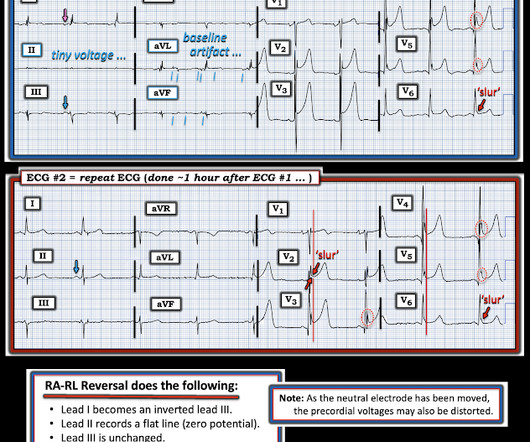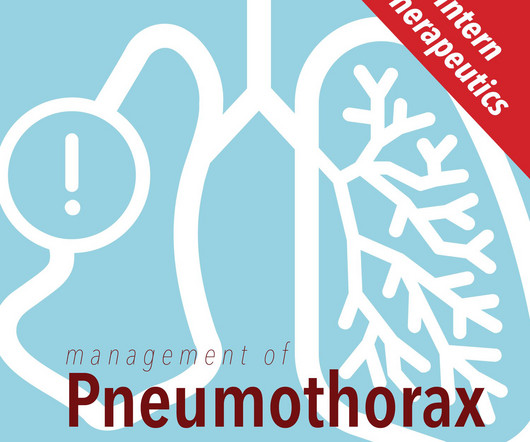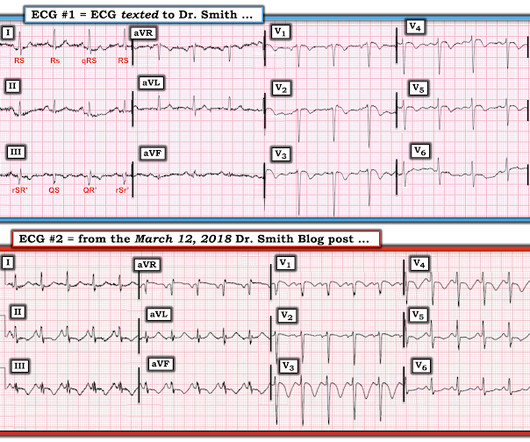An elderly male with acute altered mental status and huge ST Elevation
Dr. Smith's ECG Blog
OCTOBER 12, 2024
A man in his 90s with a history of HTN, CKD, COPD, and OSA presented to the emergency department after being found unresponsive at home. The providers documented concern for ST elevation in the precordial and lateral leads as well as a concern for hyperkalemic T waves in the setting of succinylcholine administration. Epub 2016 Aug 27.
















Let's personalize your content